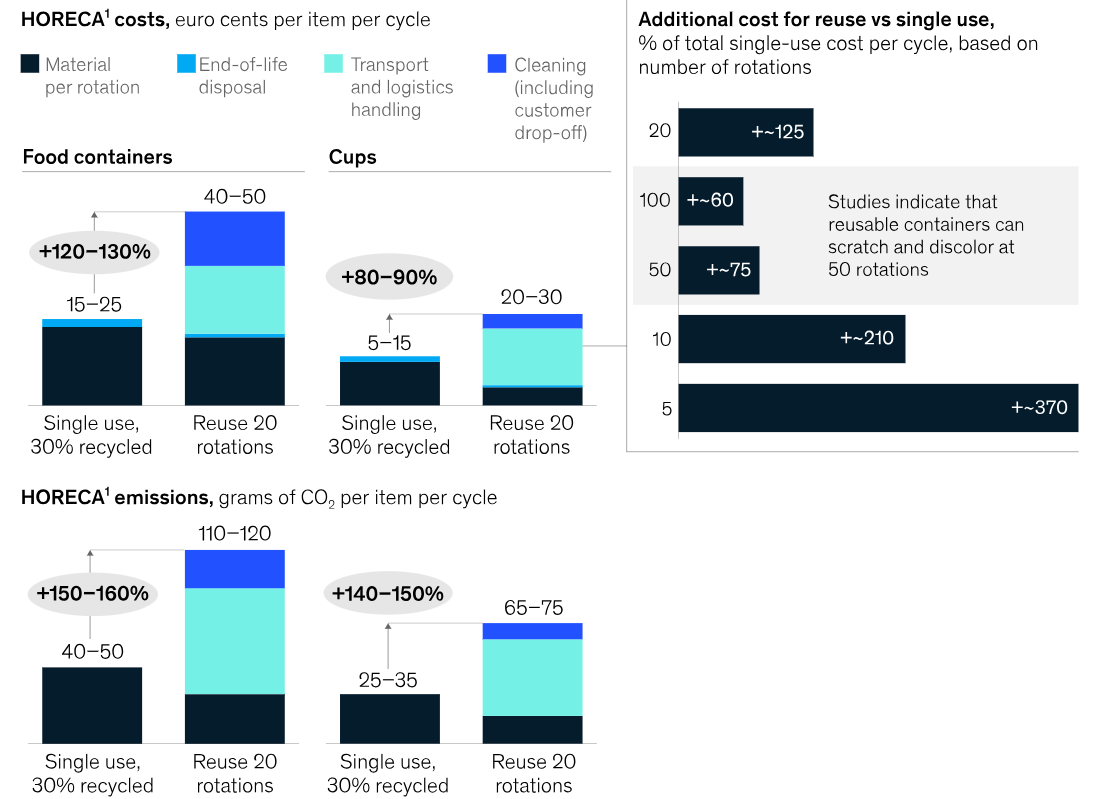Packaging Reuse Models, Ready to Reduce Plastic Waste?

Experts recognize reusability models in packaging as a solution to minimize waste.
McKinsey & Company’s use-case scenarios indicate that there are still challenges to resolve before realizing and scaling up the benefits. According to the Ellen MacArthur Foundation (EMF), reusable packaging could be a key part of a circular economy for plastic. It has the potential to address plastic pollution and bring significant business benefits, such as improved brand loyalty, better user experience, and lower costs.
Four different business-to-consumer (B2C) reuse models differ depending on whether the packaging is refilled by the user or returned to business, and whether that refill/return takes place from home or on the go.
The EMF emphasizes that large-scale reuse systems offer benefits like shared costs and decreased consumption of materials and fuel.
Reuse models need to overcome barriers
However, McKinsey & Company says the reuse concept is complex, and stakeholders should understand the impact of cost and environmental factors. There are several limiting factors to scaling reusability within the current packaging value chain, mainly linked to a lack of acceptance, lack of infrastructure, product safety, and cost.
McKinsey & Company did a study on takeaway food service in Belgium to simulate the impact of a reuse system.
The emissions increase for reusable packaging
This scenario assumes that consumers receive food or drinks packaged in reusable food containers or cups, either at a food service location or via home delivery. To facilitate the return of reusable packaging, the model assumes that collection points are established.
The modeling shows that a reusability solution can double the cost per use of a container or cup. Also, emissions will likely increase by more than 150 percent. This is on account of the higher share of fossil components in materials, transport, and energy use. The combined impact on Belgian takeaway businesses could raise costs by more than €10 million while adding 5000 tons of CO2 emissions and increasing water consumption by at least 20 million liters.
Moreover, the models indicate that achieving emissions reductions requires system operators to exceed 20 rotations. For takeaway food packaging, this number could go as high as 200 rotations, a goal that seems improbable for that application.
Thus, to make reusability an economically and environmentally efficient solution, it is crucial to use reliable and lasting materials and ensure a high number of returns through incentives and harmonized communication.
As a sustainable alternative, the broader adoption of reusable packaging in the packaging value chain could be possible. Overcoming challenges such as cost reduction and minimizing logistics emissions will be crucial for industry leaders. Successful implementation will necessitate partnerships across the packaging value chain.
Click here to check the complete McKinsey & Company study

